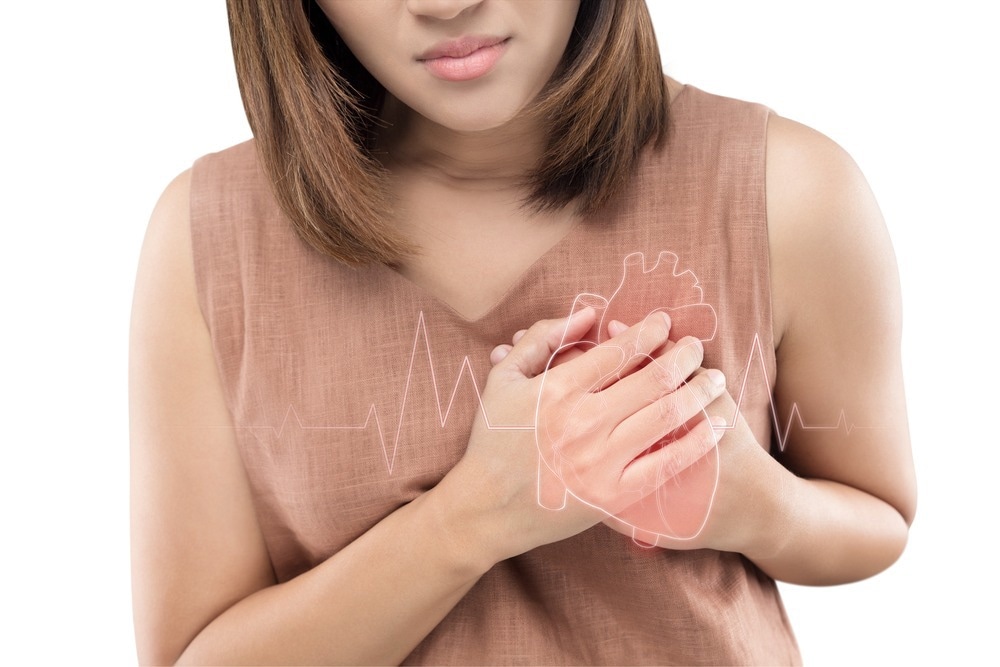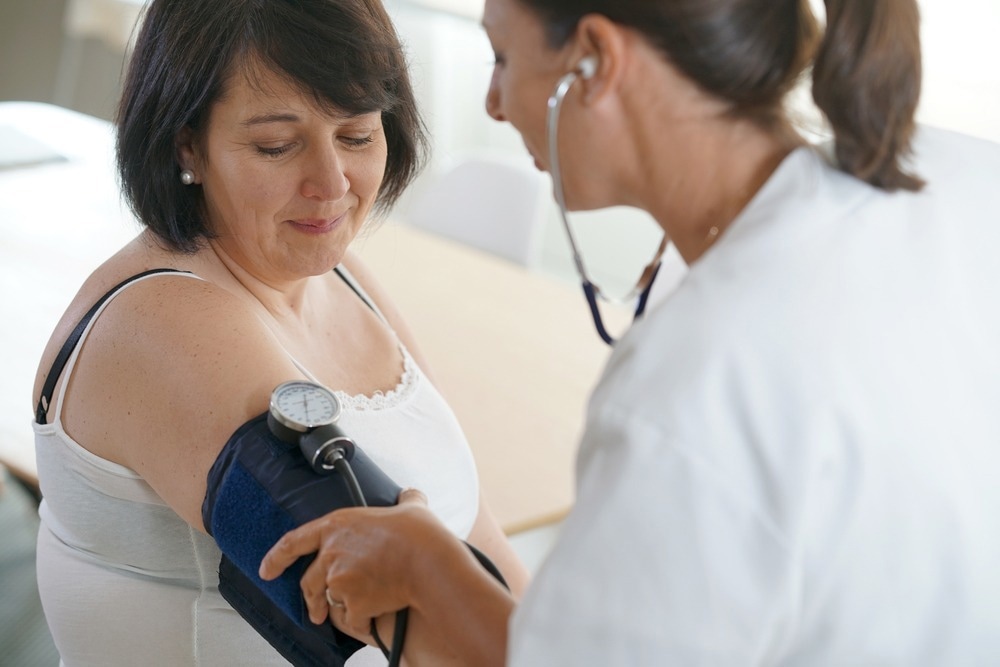Introduction
Gender Bias in Cardiovascular Disease Management
Delay in Seeking Medical Help
Misdiagnosis
Undertreatment
Steps to Follow
References
Further Reading
Gender bias against women in the field of cardiovascular diseases has been known for decades. Women with cardiovascular disorders are more likely to be misdiagnosed and/or undertreated and have higher mortality rates than men.

Cardiovascular disease. Image Credit: Emily frost/Shutterstock.com
Gender bias in cardiovascular disease management
Cardiovascular disease is a leading cause of death in women worldwide. According to a recent report published by the British Heart Foundation, women with coronary heart disease have a two-times higher risk of death than those with breast cancer in the UK.
Delay in seeking medical help
One potential reason for this high mortality is the delay in seeking medical help from women. They often perceive heart attack, or cardiac arrest, as a “male problem”, and thus, do not recognize heart attack-related symptoms on time.
It has been estimated that the average duration between symptom onset and seeking medical help is 1.8 – 7.2 hours for women. Whereas, for men, the average duration is 1.4 – 3.5 hours. A delay in seeking medical help could potentially interrupt the timely administration of life-saving treatment, which could subsequently lead to more severe cardiac damage and even death.
Misdiagnosis
Misdiagnosis of cardiovascular conditions is another potential reason for higher mortality among women. It has been estimated that women are 50% more likely to be misdiagnosed than men. Misdiagnosis of heart attack could increase the risk of death by 70% after 30 days of the symptom onset.
One potential reason for misdiagnosis could be the difference in symptoms between men and women. Women with cardiovascular diseases exhibit a wider range of symptoms than men, including stomach pain and nausea. However, because of the disproportionately low representation of women in clinical trials, it remains largely uncertain whether there are actually gender disparities in cardiovascular symptoms.
Misdiagnosis could also be related to the type of test performed for the diagnosis. A troponin test is a common method to diagnose heart attack in both men and women. In the test, the blood level of troponin, which is a protein released into circulation in response to cardiac tissue damage, is measured.
Although the diagnostic threshold is believed to be the same for both men and women, recently it has been observed that women experiencing heart attacks have lower blood troponin levels than men. This observation highlights the need for establishing a gender-specific diagnostic threshold. Studies have shown that about a 42 % increase in diagnostic accuracy in women can be achieved by using highly sensitive tests with gender-specific thresholds.
Implicit gender bias of physicians is a potential reason associated with misdiagnosis in women. It has been observed that gender-biased beliefs of physicians are associated with differential management of male and female patients with suspected coronary artery disease. Physicians who perceive men as stronger and more risk-taking than women are more likely to recommend angiography for male patients than women patients, despite the similar presentation of symptoms.
Undertreatment
Inadequate treatment is another potential factor associated with a poor prognosis of cardiovascular diseases in women. It has been observed that women with cardiac problems are less likely to receive life-saving medicines on an emergency basis. Similarly, women who have already suffered a heart attack are less likely to receive medicine to prevent a second heart attack.
Besides impacting diagnosis, implicit gender bias of physicians can influence their therapeutic decision-making process. A relatively higher mortality rate has been observed among female cardiac arrest patients who have been treated by male physicians.
Based on the analysis of the UK’s National Heart Attack Registry, it has been predicted that by administering the same standard of care in women as men, at least 8000 deaths could have been prevented in female cardiac arrest patients.

Blood pressure. Image Credit: goodluz/Shutterstock.com
A 3% lesser likelihood of receiving blood flow-restoring treatments such as stents and reperfusion has been observed among women compared to that among men. Similarly, women are 7% less likely to receive beta-blockers, which are medicines to prevent future heart attacks.
Because of the significantly lower participation of women in clinical trials, gender-specific information on treatment response and outcome is lacking. Female patients with cardiovascular complications are, thus, treated on the basis of clinical evidence predominantly obtained from male patients.
This information gap has deferred the clinical comprehension about certain health conditions that may adversely affect cardiovascular health in women. While treating female patients with cardiac complications, it is crucial to consider that certain health conditions including gestational diabetes and preeclampsia can increase the risk of cardiovascular diseases in women.
Other vital information in this field is that young, healthy women are predominantly susceptible to a particular type of heart attack called spontaneous coronary artery dissection.
Steps to follow
To reduce gender bias against women in the field of cardiovascular diseases, the British Health Foundation has identified three main domains that need to be addressed. These domains include increasing awareness, understanding and tackling gender inequality, and arranging more funds to support cardiovascular research in women.
References
Further Reading